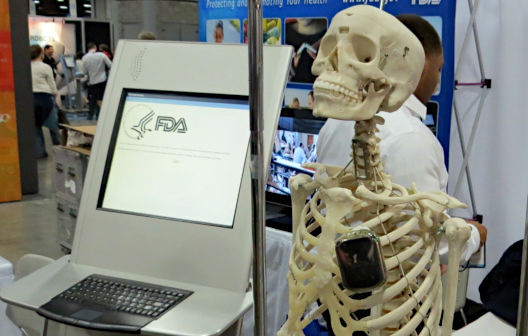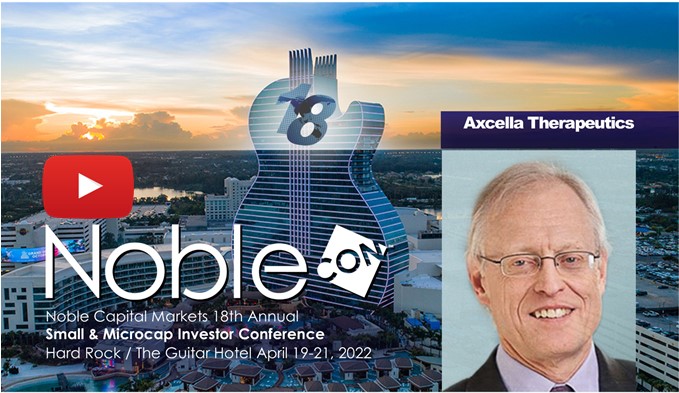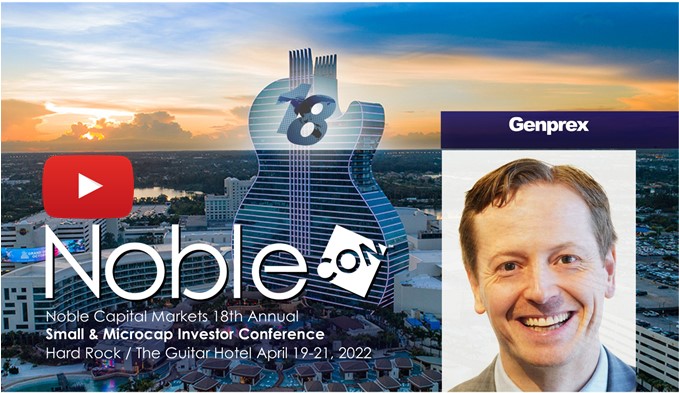
Motorsport Games and BTCC Announce Future Promotional Plan to Upcoming Official BTCC Game
Research, News, and Market Data on Motorsport Games
THE DEVELOPMENT TEAMS WILL CONTINUE REFINING THE USER EXPERIENCE WHILE BOTH COMPANIES WILL OFFER MULTIPLE BRAND ACTIVATIONS AND GAMEPLAY CONTENT IN THE LEAD-UP TO FULL RELEASE
MIAMI, June 02, 2022 (GLOBE NEWSWIRE) — Motorsport Games Inc. (NASDAQ: MSGM) (“Motorsport Games”
or the “Company”), a leading racing game developer, publisher and esports ecosystem provider of official motorsport racing series throughout the world, announces today a promotional plan update, including activations, content releases and ‘first-play content’ tech demos through rFactor 2, to its planned British Touring Car Championship (“BTCC”) official game, which will release in 2024, as previously disclosed by the Company. A link to the trailer for the rFactor 2 content can be found here.
Motorsport Games and its developers are expanding and reinforcing their BTCC development efforts to optimize the user experience, offer a better value proposition to the end user and enhance product differentiation within a robust racing games marketplace. By expanding their development efforts, the Motorsport Games development team will fundamentally overhaul the platform, allowing for a cleaner codebase with more robust features. As part of these efforts, Motorsport Games will leverage the improvements it made to the rFactor 2 platform, developed in its work on KartKraft, to strengthen the BTCC offering, unifying the title with the Company’s current and future product portfolio to create the best possible user experience.
George Holmquist, Vice President, Publishing and Marketing,
Motorsport Games: “We are expanding our development efforts on the BTCC release to create the best experience possible for all players, with the full support from our partners at the BTCC. Both Motorsport Games and the BTCC are committed to bringing this famous and popular motorsport series to life within the virtual world. We remain excited by this project and look forward to the many activations and content releases we have planned for the BTCC game.”
While these development efforts are ongoing, Motorsport Games and the BTCC will have multiple activations for fans to participate in. This includes on-site BTCC Fan Zone events at selected BTCC events in the second half of the 2022 season, at the Autosport International Show and future BTCC events during the 2023 season. At those races during 2022 and the majority of 2023, the BTCC Fan Zone will have between two to four racing simulators with BTCC ‘first-play content’ tech demos through rFactor 2. As the BTCC game development progresses, each activation will include the official BTCC game via demos at the tracks. Fans who participate will be able to provide real-time feedback for the new game’s development. As development approaches full release in 2024, more content is planned to become available through first playable demos.
Further, Motorsport Games plans to add additional BTCC branded content into the rFactor 2 simulation platform, which would also host regular BTCC esports events. Motorsport Games and rFactor 2 added the Infiniti Q50 and Toyota Corolla BTCC cars into the simulation for fans to drive as part of a first content rollout. Daily BTCC competitions through the rFactor 2 competition system will be open to all users, allowing for statistics-driven benefits to each driver’s rating. All content released via rFactor 2 will be utilized as a technical test bed, allowing consumers and official drivers to provide feedback for the development team and help build the best experience upon full release.
Alan Gow, CEO, BTCC: “While we understand that our fans are eager to get their hands on the BTCC game, I can assure them that the expanded development efforts that Motorsport Games is pursuing through the game’s 2024 launch will make it well worth the wait. So, we invite all of our fans to attend activations at selected BTCC events later this year to get a first look and to provide their feedback, so as to help make the new BTCC game the very best.”
Motorsport Games will announce additional information on select BTCC events featuring test versions of the game closer to each activation date. Fans are encouraged to keep up-to-date on the status of the official BTCC game through the social media channels of both Motorsport Games and the BTCC.
To keep up with the latest Motorsport Game news, visit www.motorsportgames.com and follow on Twitter, Instagram, Facebook and LinkedIn.
About Motorsport Games:
Motorsport Games, a Motorsport Network company, is a leading racing game developer, publisher and esports ecosystem provider of official motorsport racing series throughout the world. Combining innovative and engaging video games with exciting esports competitions and content for racing fans and gamers, Motorsport Games strives to make the joy of racing accessible to everyone. The Company is the officially licensed video game developer and publisher for iconic motorsport racing series across PC, PlayStation, Xbox, Nintendo Switch and mobile, including NASCAR, INDYCAR, 24 Hours of Le Mans, rFactor 2, KartKraft and the British Touring Car Championship (“BTCC”). Motorsport Games is an award-winning esports partner of choice for 24 Hours of Le Mans, Formula E, BTCC, the FIA World Rallycross Championship and the eNASCAR Heat Pro League, among others. Motorsport Games is building a virtual racing ecosystem where each product drives excitement, every esports event is an adventure and every story inspires.
About the British Touring Car Championship:
The British Touring Car Championship (BTCC) was formed in 1958 and is Britain’s most popular motor racing spectacle with its race season comprising ten events at top circuits across the UK. It is contested by professional racing drivers in competition versions of everyday road cars, giving it tremendous public appeal. Over 380,000 watch the BTCC trackside each year and it receives widespread UK terrestrial TV exposure on the ITV network, with all ten events broadcast live across ITV, ITV4 and itv.com.
The 2022 campaign marks the start of the BTCC’s Hybrid Era, as the championship becomes the first touring car series in the world to integrate hybrid power into all of its race cars.
Forward-Looking Statements:
Certain statements in this press release, the related conference call and webcast which are not historical facts are forward-looking statements within the meaning of Section 27A of the Securities Act of 1933, as amended, and Section 21E of the Securities Exchange Act of 1934, as amended, and are provided pursuant to the safe harbor provisions of the Private Securities Litigation Reform Act of 1995. Any statements in this press release that are not statements of historical fact may be deemed forward-looking statements. Words such as “continue,” “will,” “may,” “could,” “should,” “expect,” “expected,” “plans,” “intend,” “anticipate,” “believe,” “estimate,” “predict,” “potential,” and similar expressions are intended to identify such forward-looking statements. These forward-looking statements include, but are not limited to, statements concerning: (i) the release of the BTCC game in 2024 and/or the activations of the BTTC game for fans to participate in; (ii) and the expectation that each activation will include the official BTCC game via demos at the tracks; (iii) the expectation to refine the user experience, offer a better value proposition to the end user and enhance product differentiation within a robust racing games marketplace; (iv) the expectation that, with the expanded development efforts, the Company’s development team will fundamentally overhaul the platform, allowing for a cleaner codebase with more robust features in the BTTC game; (v) the expectation that the Company will leverage the improvements it made to the Factor 2 platform, developed in its work on KartKraft will strengthen the BTCC game; (vi) the expectation that more content will become available through ”first play content” demos and that such demos will be made available through rFactor 2; (vii) the expectation that unifying BTTC title with the Company’s current and future product portfolio will create the best possible user experience; (viii) that fans who participate in the activations will be able to provide real-time feedback for the new game’s development; (ix) that, as development approaches full release in 2024, more content will become available through first playable demos; (x) the expectation that BTCC branded content will be added into the rFactor 2 simulation platform and that such platform will also host regular BTCC esports events; (xi) the expectation that daily BTCC competitions through the rFactor 2 competition system will be open to all users and that such competitions will allow for statistics-driven benefits to each driver’s rating; (xii) the expectation that content released via rFactor 2 will be utilized as a technical test bed, allowing consumers and official drivers to provide feedback for the development team and help build the best experience upon full release; (xiii) the expectation that new BTCC game will be the very best; (xiv) that the expanded development efforts that the Company is pursuing through BTCC game’s 2024 launch will make it well worth the wait; and (xv) the expected future impact of new or planned products or offerings and the timing of launching such products and offerings, including, without limitation the Company’s belief that we will deliver against our product roadmap. All forward-looking statements involve significant risks and uncertainties that could cause actual results to differ materially from those expressed or implied in the forward-looking statements, many of which are generally outside the control of Motorsport Games and are difficult to predict. Examples of such risks and uncertainties include, but are not limited to: (i) difficulties, delays or less than expected results in achieving the Company’s growth plans, objectives and expectations, such as due to a slower than anticipated economic recovery and/or the Company’s inability, in whole or in part, to continue to execute its business strategies and plans, such as due to less than anticipated customer acceptance of the Company’s new game titles, the Company’s experiencing difficulties or the inability to launch its games as planned, less than anticipated performance of the games impacting customer acceptance and sales and/or greater than anticipated costs and expenses to develop and launch its games, including, without limitation, higher than expected labor costs and, in addition to the factors set forth in (ii) through (iv) below, the Company’s continuing financial condition and ability to obtain additional debt or equity financing to meet its liquidity requirements, such as the going concern qualification on the Company’s annual audited financial statements posing difficulties in obtaining new financing on terms acceptable to the Company, or at all; (ii) difficulties, delays in or unanticipated events that may impact the timing and scope of new product launches, such as due to difficulties or delays in using its product development personnel in Russia due to the Russia invasion of Ukraine and the related sanctions and/or more restrictive sanctions rendering transacting in the region more difficult or costly and/or difficulties and/or delays arising out of any resurgence of the ongoing and prolonged COVID-19 pandemic; (iii) less than expected benefits from implementing the Company’s management strategies and/or adverse economic, market and geopolitical conditions that negatively impact industry trends, such as significant changes in the labor markets, an extended or higher than expected inflationary environment (such as the impact on consumer discretionary spending as a result of significant increases in energy and gas prices which have been increasing since early in 2020), a higher interest rate environment, tax increases impacting consumer discretionary spending and or quantitative easing that results in higher interest rates that negatively impact consumers’ discretionary spending, or adverse developments relating to the Russia invasion of Ukraine; and/or (iv) difficulties and/or delays in resolving our liquidity position, and other unanticipated difficulties in resolving our continuing financial condition and ability to obtain additional capital to meet our liquidity needs, including without limitation, difficulties in securing funding that is on commercially acceptable terms to us or at all, such as our inability to complete in whole or in part any potential debt and/or equity financing transactions, as well as any inability to achieve cost reductions and/or less than expected availability of funds under its $12 million line of credit from Motorsport Network. Factors other than those referred to above could also cause Motorsport Games’ results to differ materially from expected results. Additional examples of such risks and uncertainties include, but are not limited to: (i) delays and higher than anticipated expenses related to the ongoing and prolonged COVID-19 pandemic, any resurgence of COVID-19 and the Russia invasion of Ukraine; (ii) Motorsport Games’ ability (or inability) to maintain existing, and to secure additional, licenses and other agreements with various racing series; (iii) Motorsport Games’ ability to successfully manage and integrate any joint ventures, acquisitions of businesses, solutions or technologies; (iv) unanticipated operating costs, transaction costs and actual or contingent liabilities; (v) the ability to attract and retain qualified employees and key personnel; (vi) adverse effects of increased competition; (vii) changes in consumer behavior, including as a result of general economic factors, such as increased inflation, higher energy prices and higher interest rates; (viii) Motorsport Games’ ability to protect its intellectual property; and/or (ix) local, industry and general business and economic conditions. Additional factors that could cause actual results to differ materially from those expressed or implied in the forward-looking statements can be found in Motorsport Games’ filings with the SEC, including its Annual Report on Form 10-K for the fiscal year ended December 31, 2021, its Quarterly Reports on Form 10-Q filed with the SEC during 2022, as well as in its subsequent filings with the SEC. Motorsport Games anticipates that subsequent events and developments may cause its plans, intentions and expectations to change. Motorsport Games assumes no obligation, and it specifically disclaims any intention or obligation, to update any forward-looking statements, whether as a result of new information, future events or otherwise, except as expressly required by law. Forward-looking statements speak only as of the date they are made and should not be relied upon as representing Motorsport Games’ plans and expectations as of any subsequent date.
Website and Social Media Disclosure:
Investors and others should note that we announce material financial information to our investors using our investor relations website (ir.motorsportgames.com), SEC filings, press releases, public conference calls and webcasts. We use these channels, as well as social media and blogs, to communicate with our investors and the public about our company and our products. It is possible that the information we post on our websites, social media and blogs could be deemed to be material information. Therefore, we encourage investors, the media and others interested in our company to review the information we post on the websites, social media channels and blogs, including the following (which list we will update from time to time on our investor relations website):
The contents of these websites and social media channels are not part of, nor will they be incorporated by reference into, this press release.
Investors:
Ashley DeSimone
Ashley.Desimone@icrinc.com
Press:
ASTRSK PR
motorsportgames@astrskpr.com
























